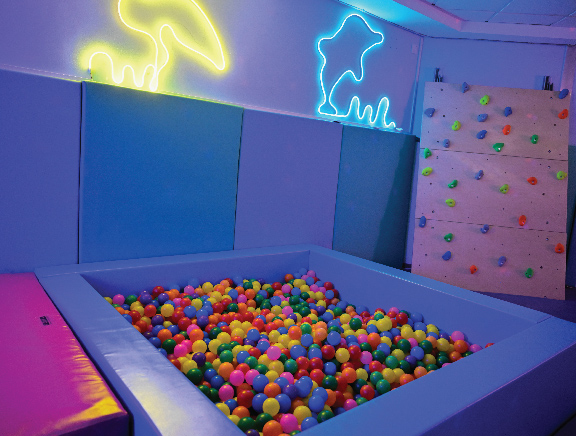
Homechevron_rightTechnology
Sensory Rooms for Reducing Agitation and Anxiety
Sensory rooms are specialized environments designed to provide sensory stimulation and relaxation for individuals experiencing agitation, anxiety, or sensory processing difficulties. Here's how sensory rooms are used and their benefits:
- Reducing Agitation and Anxiety: The primary purpose of sensory rooms is to create a calming and soothing environment that helps individuals relax and alleviate feelings of agitation and anxiety. The sensory experiences offered in these rooms, such as soft lighting, soothing sounds, gentle vibrations, and tactile materials, help promote relaxation and stress reduction.
- Sensory Stimulation: Sensory rooms provide a range of sensory stimuli designed to engage the senses and promote relaxation. These may include visual stimuli such as bubble tubes, fiber optic lights, and projected images; auditory stimuli such as calming music, nature sounds, and white noise; tactile stimuli such as textured surfaces, soft fabrics, and tactile panels; olfactory stimuli such as aromatherapy scents; and vestibular and proprioceptive stimuli such as rocking chairs, swings, and balance boards.
- Sensory Integration: For individuals with sensory processing difficulties, sensory rooms offer a controlled environment where they can engage with sensory stimuli in a structured and supportive manner. This helps individuals regulate their sensory responses, improve sensory processing skills, and enhance their ability to cope with sensory challenges in everyday life.
- Promoting Relaxation and Well-being: Sensory rooms are conducive to relaxation and well-being, providing a safe and comfortable space where individuals can unwind, de-stress, and recharge. The calming sensory experiences offered in these rooms help promote relaxation, improve mood, and enhance overall emotional well-being.
- Managing Challenging Behaviors: Sensory rooms can be valuable tools for managing challenging behaviors associated with conditions such as autism spectrum disorder, dementia, anxiety disorders, and developmental disabilities. By providing a soothing and supportive environment, sensory rooms help individuals regulate their emotions, reduce stress, and prevent or de-escalate challenging behaviors.

